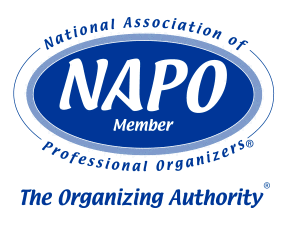Memorial Day is the official kick of the summer driving season. Some of us may just be taking a quick trip to the mountains or beach. Others may be taking a long road trip to visit family and friends. No matter the distance or duration, it’s important to make sure your car is in tip-top shape and stocked with essentials before you hit the road.
As a family, we mainly vacationed by car. We had a large station wagon we affectionately called the “Blue Racer.” Yes, it was blue, but, trust me, it never, ever “raced.” There were seven of us: Mom and Dad always in the front; the oldest three siblings nestled in the middle seat; and being the youngest, my brother and I rode facing backwards in the far back (ugh!). The “Blue Racer” took us to the mountains, beach, sand dunes, Grand Canyon, and multiple trips to our grandparents’ homes. Although my father was incredibly diligent about regular car maintenance both inside and out, he ALWAYS took it to the mechanic before we started any family trips. Because of his diligence, I don’t remember any car-related issues on any of our trips. That wasn’t accidental, it took planning.
Here’s a short checklist to get you started:
1. Take your car to a trusted mechanic. Most have a multi-point checklist, but if not, ensure they perform at least the following services:
• Check the battery and plugs.
• Check the belts and coolant levels.
• Ensure the tires have plenty of tread and the appropriate tire pressure.
• Check the air filter to ensure maximum efficiency.
• Change the oil.
• Check wiper blades.
2. Clean your car.
• Get rid of what you don’t need. Summer road trips are much more enjoyable if you aren’t dealing with old food wrappers, outdated receipts, and hats and scarves from the winter season.
• Vacuum both the seats and floors thoroughly.
• Protect the interior with a good leather or vinyl protector
• Wash and wax your car. Be sure to check for and repair any scratches that may later result in rust or corrosion.
3. Make sure your car is stocked with essentials:
• Vehicle manual in case of breakdown.
• Jumper cables, tire pressure gauge, flares, warning triangle, and security vest.
• Extra windshield washer fluid, coolant, and a fire extinguisher.
• Small tool kit.
• First aid kit.
• Flashlight (be sure to check batteries).
• Cell phone charger.
• Pencil and notebook for games or just taking notes along the way.
• Snacks. Make sure the snacks won’t melt if the car gets warm.
• Water. Have enough water for however long you will be in the car on any particular day. Due to potential health risks, you don’t want to store disposable water bottles in your car for extended periods of time.
(I know it looks like a ton of stuff to carry around, but, just like good insurance . . . you hope you never need to use it, but if you do, you’re glad you have it.)
With careful planning and a positive attitude, your summer road trip will be safe and full of fond memories.
Now, go enjoy some summer fun!
Cindy Jobs
National Association of Professional Organizers, Seattle Chapter Vice President
Institute for Challenging Disorganization:
Level I Certificates earned in Chronic Disorganization; ADD; Client Administration; Time Management; Mental Health; and Hoarding.
Level II Specialist Certificates earned in Chronic Disorganization and ADHD.
Coach Approach for Organizers
Graduate of the Comprehensive Training Program: Coaching Essentials; Strengths-Based Coaching; Brain-Based Coaching; Life and ADHD Coaching; and Organizer Coach Integration
Graduate-level training: Body-Based Coaching; ADHD Coaching Competencies






